Have you ever wondered what kayaking and tennis have in common?
These two recreational sports both require you to use your arms in ways that can sometimes lead to injuries.
Tennis elbow is the term that people commonly use for describing the painful condition that can develop during the overuse of this part of the body.
Interestingly, fewer than 5% of tennis elbow cases are actually due to the sport.
Instead, the majority of diagnoses involve people who engage in other activities, and kayaking is included in the list of potential sports that can lead to an elbow injury.
In the watersports world, you’ll sometimes hear this condition being referred to as paddler’s elbow.
Dealing with a painful elbow is inconvenient, but there are many things you can do to keep discomfort from ruining your chance to enjoy your favorite sport.
- What is Paddler’s Elbow?
- What Are the Symptoms of Elbow Tendonitis?
- Can You Still Kayak With an Elbow Injury?
- Do I Need to Go to a Doctor For Treatment?
- How Do Doctors Check for Paddler’s Elbow?
- What Helps With Paddler’s Elbow Pain?
- Can the Pain Become Chronic?
- How Can I Avoid Getting Paddler’s Elbow? (8 Tips)
- Conclusion
- You Might Also Like…
Disclosure: this post contains affiliate links (clearly marked with ), which means we may earn a commission if you buy something through them, at no additional cost to you.
What is Paddler’s Elbow?
Paddler’s elbow is a form of tendonitis. This condition occurs when the tendons around the elbow become inflamed and begin to swell.
Tendons are tough bands of tissue that help hold your muscles to the bones. They are meant to stretch, but like other parts of your body, they can only go so far.
When these tendons are forced to stretch beyond their limits, they can develop small tears. The tendons then develop inflammation that leads to pain as they try to heal.
Although paddler’s elbow is painful, most people heal well with proper identification of the injury and treatment.
What Are the Symptoms of Elbow Tendonitis?
Many kayakers find that paddler’s elbow develops gradually over time. The pain sometimes feels mild at first and increases if you continue to engage in activities that cause further trauma.
The pain is usually felt the most on the outside of the elbow near the bony part where your arm bends. Some kayakers find that the pain also radiates out towards their upper and lower arms.
The pain may feel like a constant ache when you are using your arm. Some people also experience burning or shooting sensations along the injured area.
Depending upon the severity of the injury, you might have a weak grasp, and the pain could wake you up at night.
Doing movements that involve the forearm tends to bring on more pain. Grabbing a paddle or lifting your kayak are two activities that might become more painful when you have paddler’s elbow.
Can You Still Kayak With an Elbow Injury?
Most cases of paddler’s elbow do best with rest. If the injury is mild, you might still be able to kayak provided that you take some extra precautions.
Choosing a calm body of water for your kayaking adventure helps you to avoid having to strain your elbow more by paddling through heavy waves and currents.
You might also want to limit how long you paddle. Consider planning a shorter trip that allows you to take several breaks throughout it.
If your elbow begins to hurt worse, then be prepared to turn back early.
Tandem kayaking is an option that some people use while they are recovering from paddler’s elbow.
If you have a buddy who doesn’t mind doing the majority of the paddling, then you might want to give this a try.
Pedal kayaks are another option that you can use to get out on the water. Using your feet might not be your preferred method of kayaking, but it is an option while your elbow heals.
Do I Need to Go to a Doctor For Treatment?
A mild case of paddler’s elbow might resolve itself with proper care at home.
However, there are times when you will need to see a doctor to make sure that you don’t have a more severe injury.
If the pain is mild and you have no other symptoms, then give your elbow a few days to heal.
If it doesn’t show signs of improvement within a week, then give your doctor a call.
You will also want to call your doctor if you experience these symptoms:
- seeing a large bump or bone sticking out near your elbow
- hearing a snap or pop shortly before the pain begins
- developing redness and extensive swelling around the elbow
- having trouble holding or lifting objects
- dealing with severe pain that does not respond to self-care
How Do Doctors Check for Paddler’s Elbow?
Doctors can use several different options to identify whether you have paddler’s elbow or a more serious injury.
Your doctor may start off with a visual exam that allows them to check for obvious signs of severe injuries such as a broken bone.
They may ask you to describe your symptoms or tell them if you experience pain as they apply pressure to different parts of your arm.
Tennis elbow won’t show up in an x-ray, but your doctor might use one to check for other problems that cause similar symptoms such as broken bones or arthritis.
An MRI or ultrasound can also be used to detect tears in the arm’s tendons and ligaments.
What Helps With Paddler’s Elbow Pain?
Self-care for paddler’s elbow involves similar techniques as you would use for other types of tendonitis.
The RICE Method is commonly recommended for this type of kayaking injury:
Resting your arm gives the tendons time to heal without experiencing further trauma, and ice helps to bring down the inflammation.
Your physician might also recommend contacting an experienced sports massage therapist to help increase blood flow to the injured tendons and relieve tension that increases pain.
Medications such as steroid injections might be used in more severe cases. Fortunately, most people do not require surgery, but this could be necessary if a tendon has a major tear.
Can the Pain Become Chronic?
Paddler’s elbow takes some time to heal. When you follow your treatment plan completely, you should start to notice some improvement within a few weeks.
However, it could take up to a full year or two before your tendon fully heals.
Some people find that their symptoms come and go for even longer than a year, especially after engaging in a strenuous paddling session.
If this is the case, then your physician might recommend further treatment.
The good news is that most cases of paddler’s elbow resolve without needing surgery.
How Can I Avoid Getting Paddler’s Elbow? (8 Tips)
Preventing any injury that causes long-term pain is important, and you can do a lot to avoid developing paddler’s elbow.
Most professional kayakers follow these guidelines to keep their elbows in good shape.
1. Strengthen Your Arm and Shoulder Muscles
Strong muscles in your arms and shoulders help to reduce the amount of strain that you place on the tendons as you paddle.
Kayakers benefit from building up their wrists and forearms.
These muscles are often overlooked during general strength training workout sessions, and you’ll notice a difference in how you paddle once you begin to focus on this part of your arm.
Reverse wrist curls are great for helping to strengthen the muscles that run from your wrist to your elbows. Wrist supination and pronation exercises also help to improve the range of motion that you have in your forearm.
2. Try a Bent Shaft Paddle
Bent shaft paddles have several benefits that help to prevent paddler’s elbow.
These paddles are designed to help you hold your hands in the proper position for paddling without exposing yourself to an injury.
Many kayakers also love that they are lighter and shorter than traditional straight paddles.
A lighter paddle helps you to avoid straining your elbow during lengthy or challenging expeditions.
3. Stay Within the Paddler’s Box
The paddler’s box is a term that you’ll often hear drilled into new kayakers’ minds during lessons for beginners.
Keeping your body within the lines of your paddler’s box helps you to avoid unnecessary strain on your muscles.
This strategy is often touted as the best way to prevent a shoulder injury, but it is just as effective for preventing paddler’s elbow.
4. Avoid Overextending Your Elbows
Your elbows should stay relaxed and slightly bent as much as possible as you paddle. Watching out for obstacles that could require you to brace quickly is one way to avoid overextending your elbows to the point that it causes an injury.
5. Stretch Before You Go Kayaking
Tight tendons and muscles in your elbow are more likely to develop tears when you use your arms to paddle.
Some light stretches help to loosen up these tendons while also sending blood flowing through your arm.
Plan for enough time to do a warm up that includes wrist and arm stretches before you hit the water and after you are finished kayaking for the day.
6. Relax Your Grip
It is tempting to hold on tight to your paddle when you fear losing it in harsh water conditions.
New kayakers also tend to grip their paddle too tight as they concentrate on maintaining a good paddling technique.
Try to remind yourself to loosen up your grip when it gets too tight.
As you practice more, you’ll notice that you naturally begin to maintain a relaxed grip that reduces tension in the muscles along your elbow.
7. Pay Attention to Your Body’s Signals
At some point, almost every kayaker will feel some type of pain from fatigue or overuse of their muscles.
If you have sustained an elbow injury in the past, then you are especially susceptible to this issue.
Take time to focus on how your body is feeling as you paddle. You might even want to plan to do a check-in with yourself about midway through your trip.
If your elbow hurts more than usual or with certain movements, then give it a rest.
You can also check to see if you need to adjust your posture or move to a calmer area on the water.
8. Use Caution During Other Activities
Paddler’s elbow could be caused or made worse by other things that you do.
For instance, you might have a small strain created by painting your house that gets more severe after you go kayaking for the weekend.
Be cautious about any activities that involve repetitive movements that involve your elbows.
Taking care of your elbows when you are off of the water helps you be sure that they’ll be pain-free when you get the opportunity to go kayaking.
Conclusion
Paddling through the water uses many of the same tendons as maneuvering a tennis racket out on the court.
There is a risk of getting tennis elbow from your paddling adventures, and paying attention to how your arm feels and responds to your technique makes it possible to continue to kayak without having to cut your trips short due to discomfort.
You Might Also Like…
-
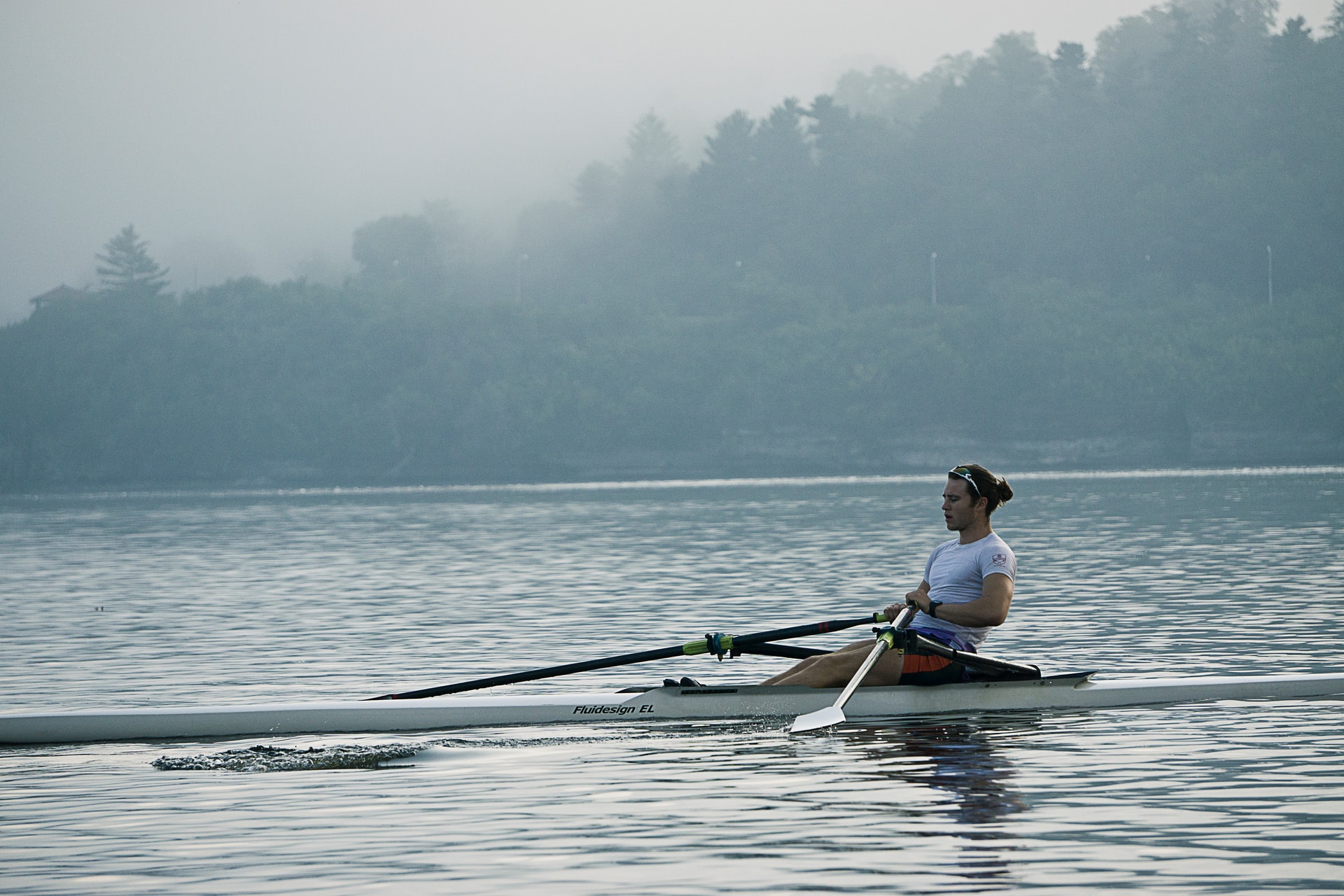
Kayaking Vs. Rowing: What’s the Difference? (8 Key Differences)
-

When Is It Too Windy for Kayaking? (Crucial Facts You Should Know)
-

When to Go Kayaking? (What Every Kayaker Should Know)
-
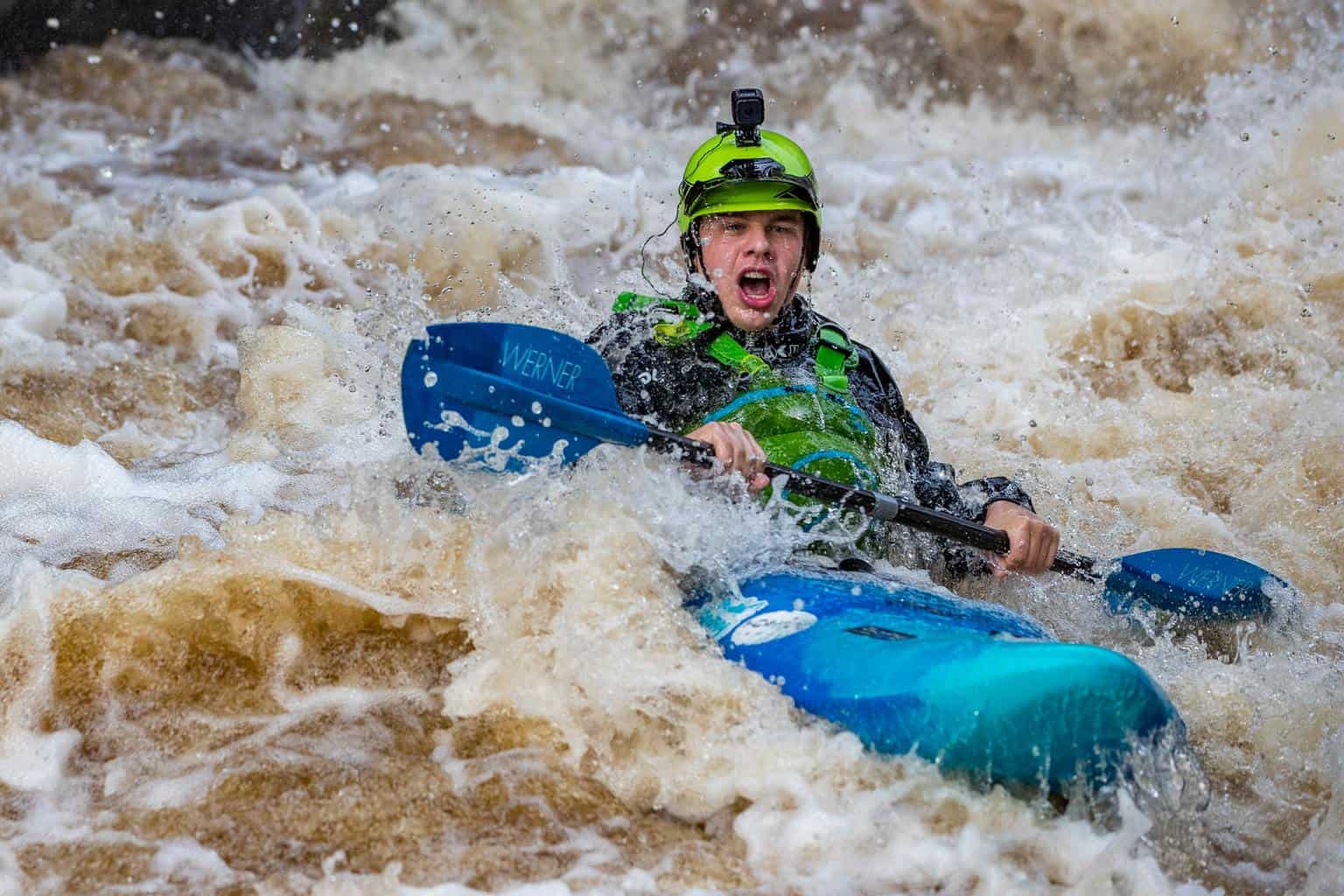
Will I Get Wet Kayaking? (Common Reasons & How to Stay Dry)
-
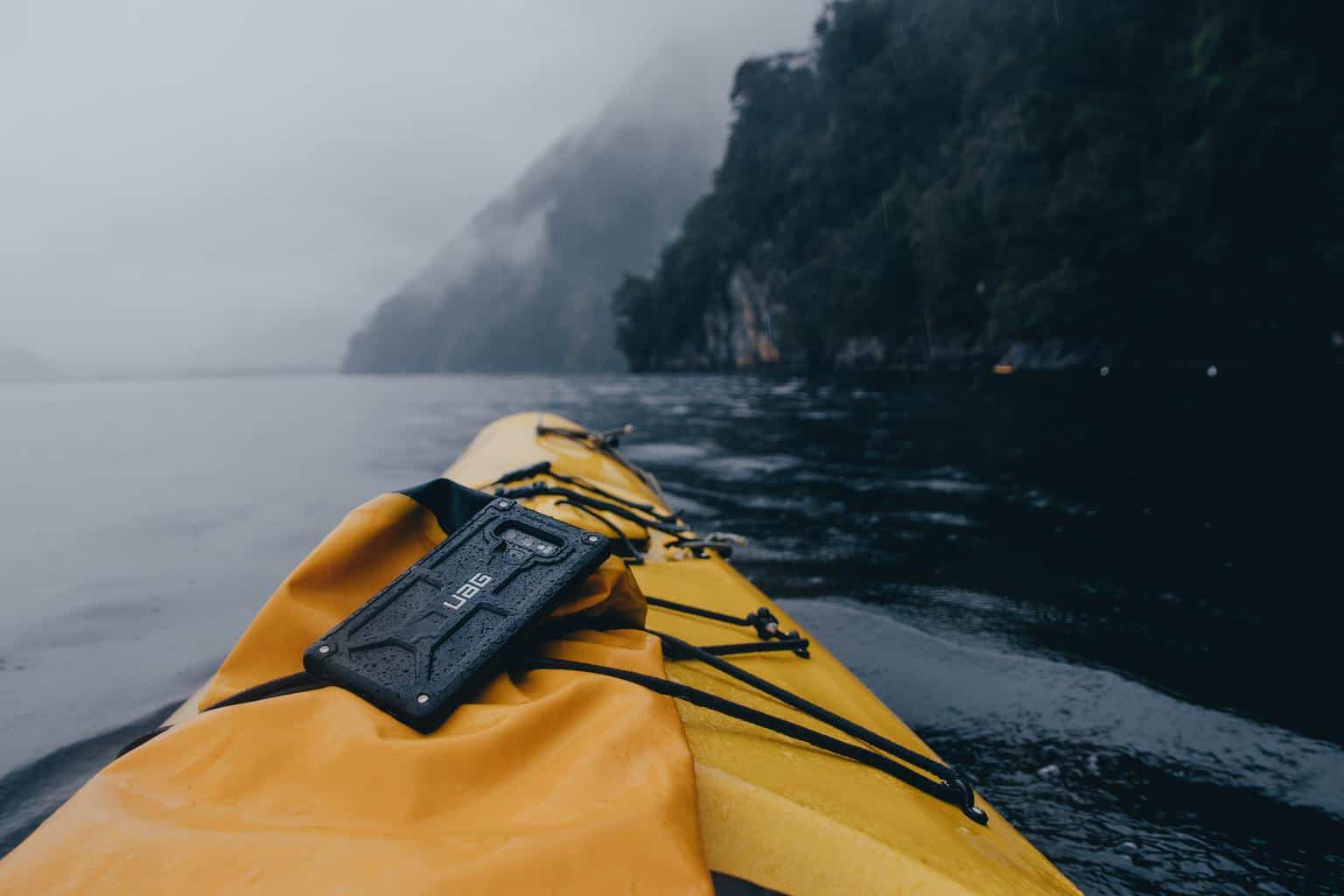
Should I Bring My Phone Kayaking? (7 Good Reasons)
-
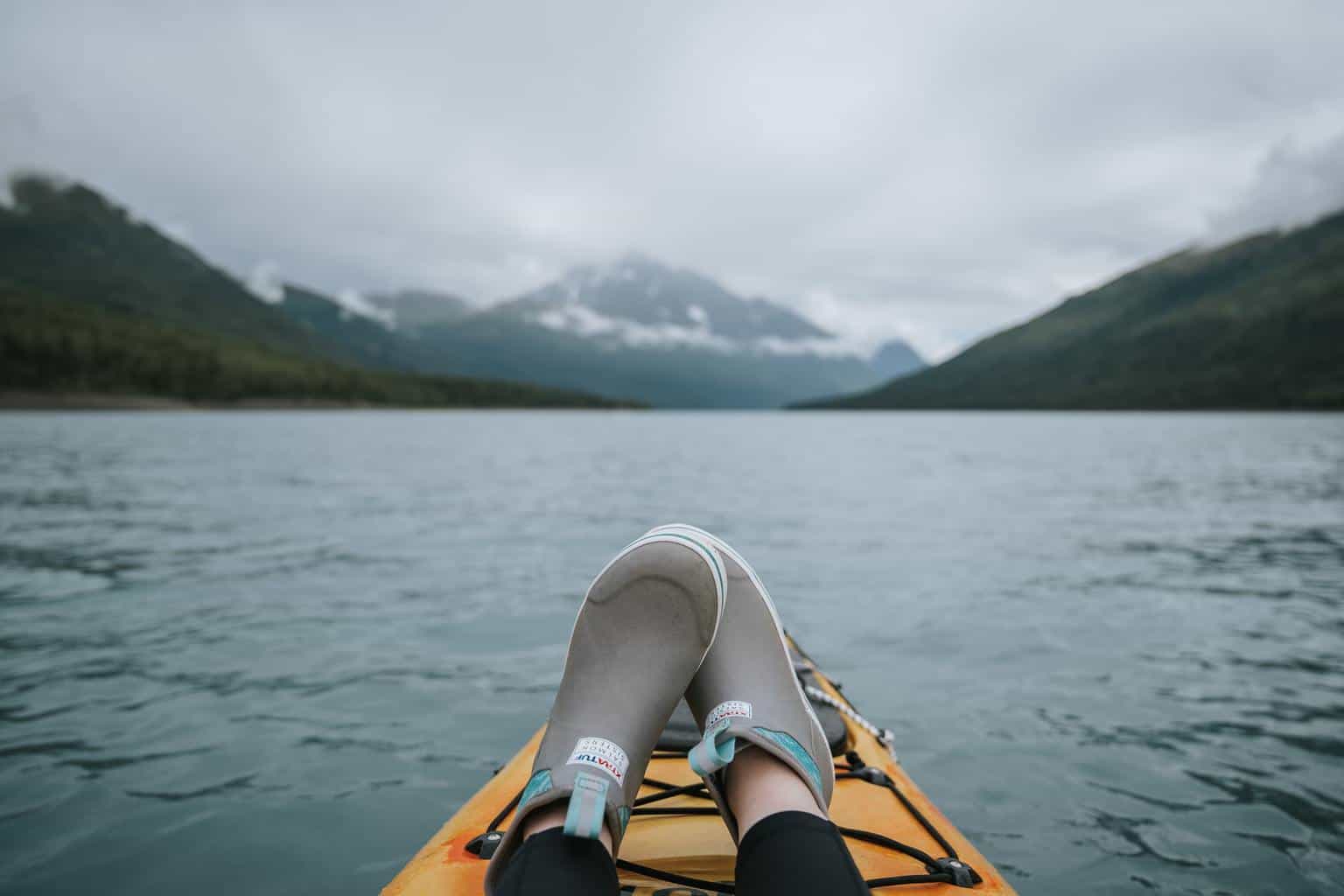
What Shoes to Wear Kayaking? (+ the Best Shoes for Your Needs)
-
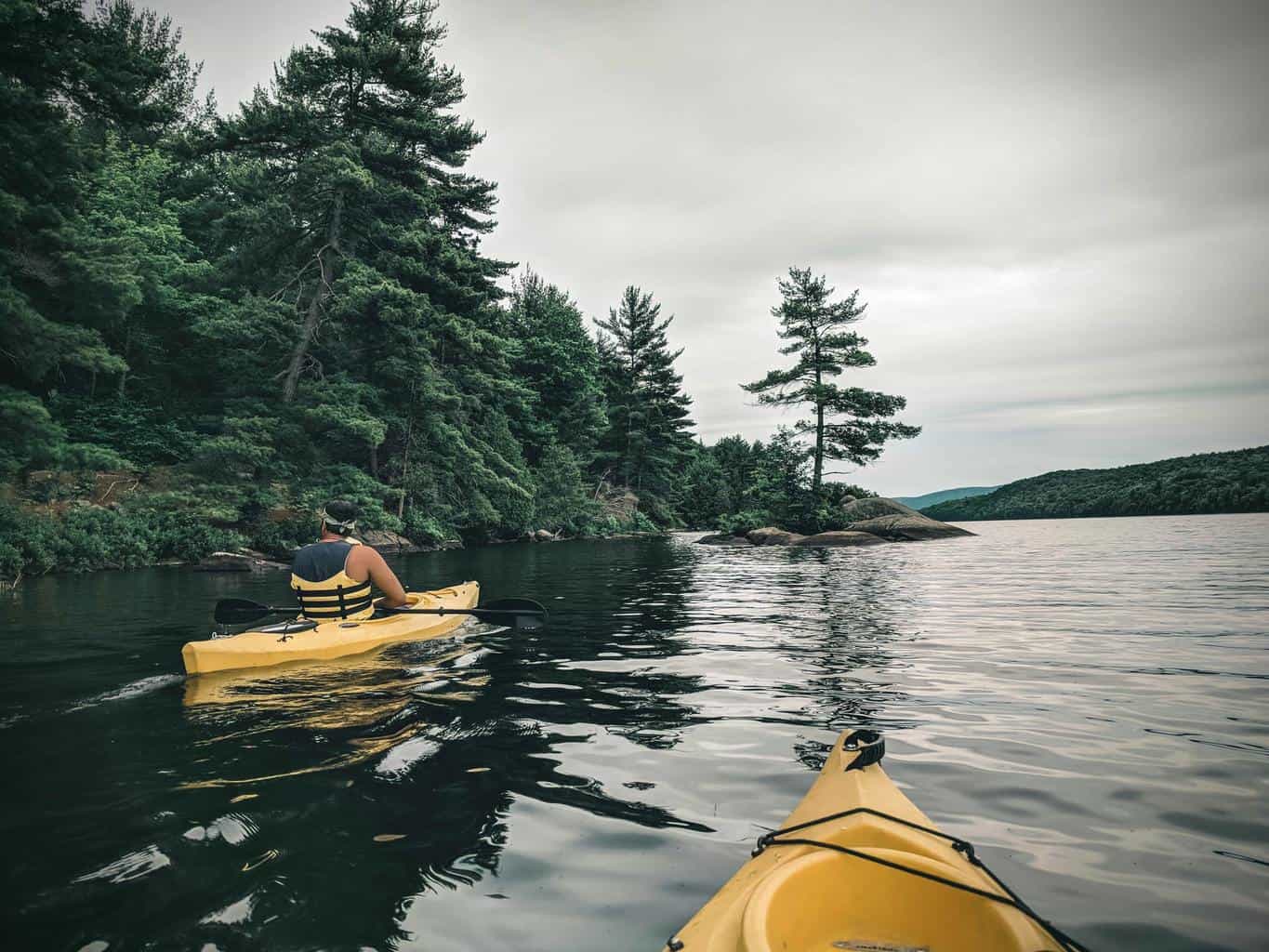
Can Kayaking Cause Chest Pain? (What Every Kayaker Should Know)
-
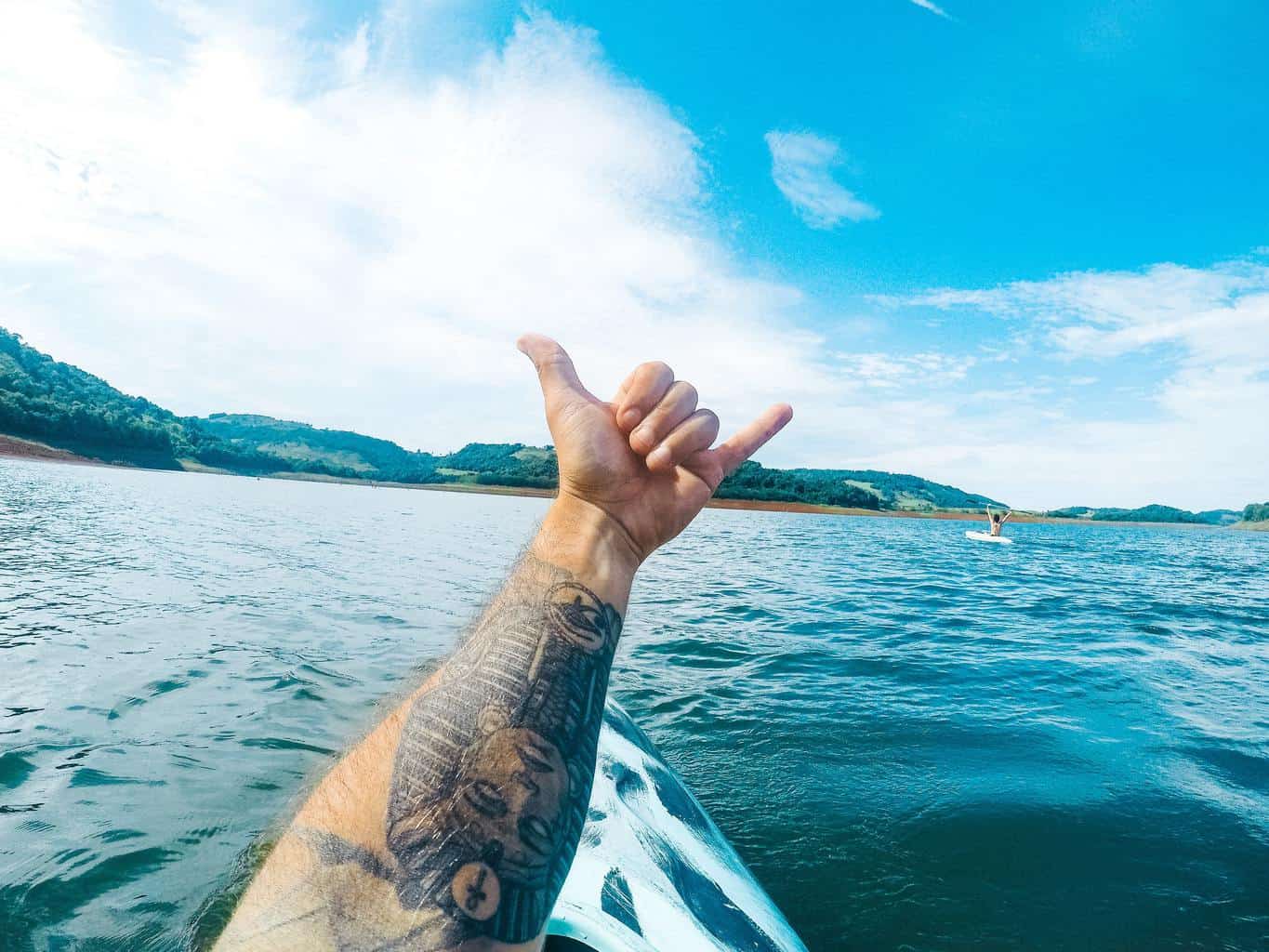
Can I Go Kayaking With a New Tattoo? (Facts You Should Know)
-

Can You Go Kayaking On Your Period? (+Practical Tips)
-
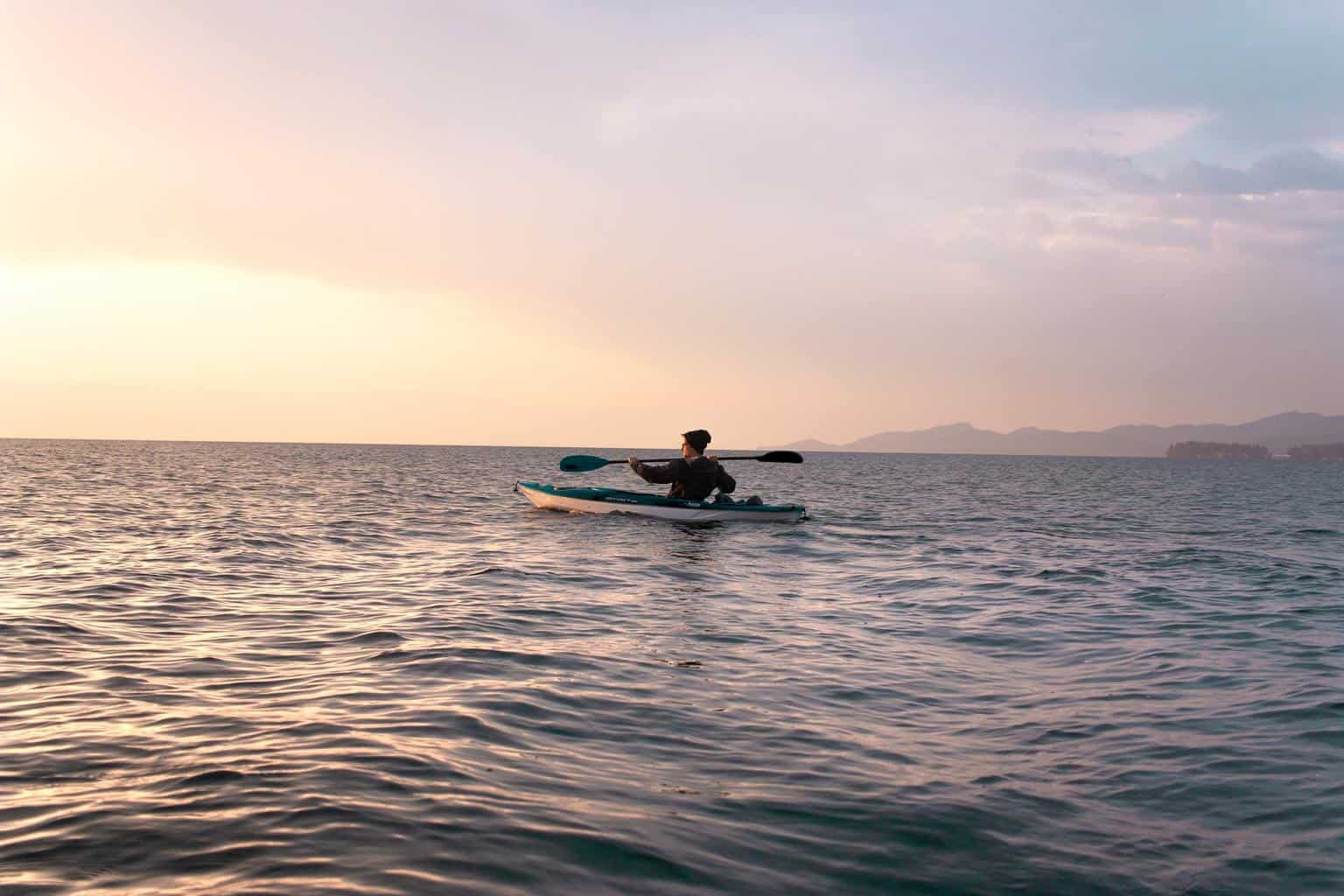
Can Kayaking Cause Hemorrhoids? (What Every Kayaker Should Know)
-
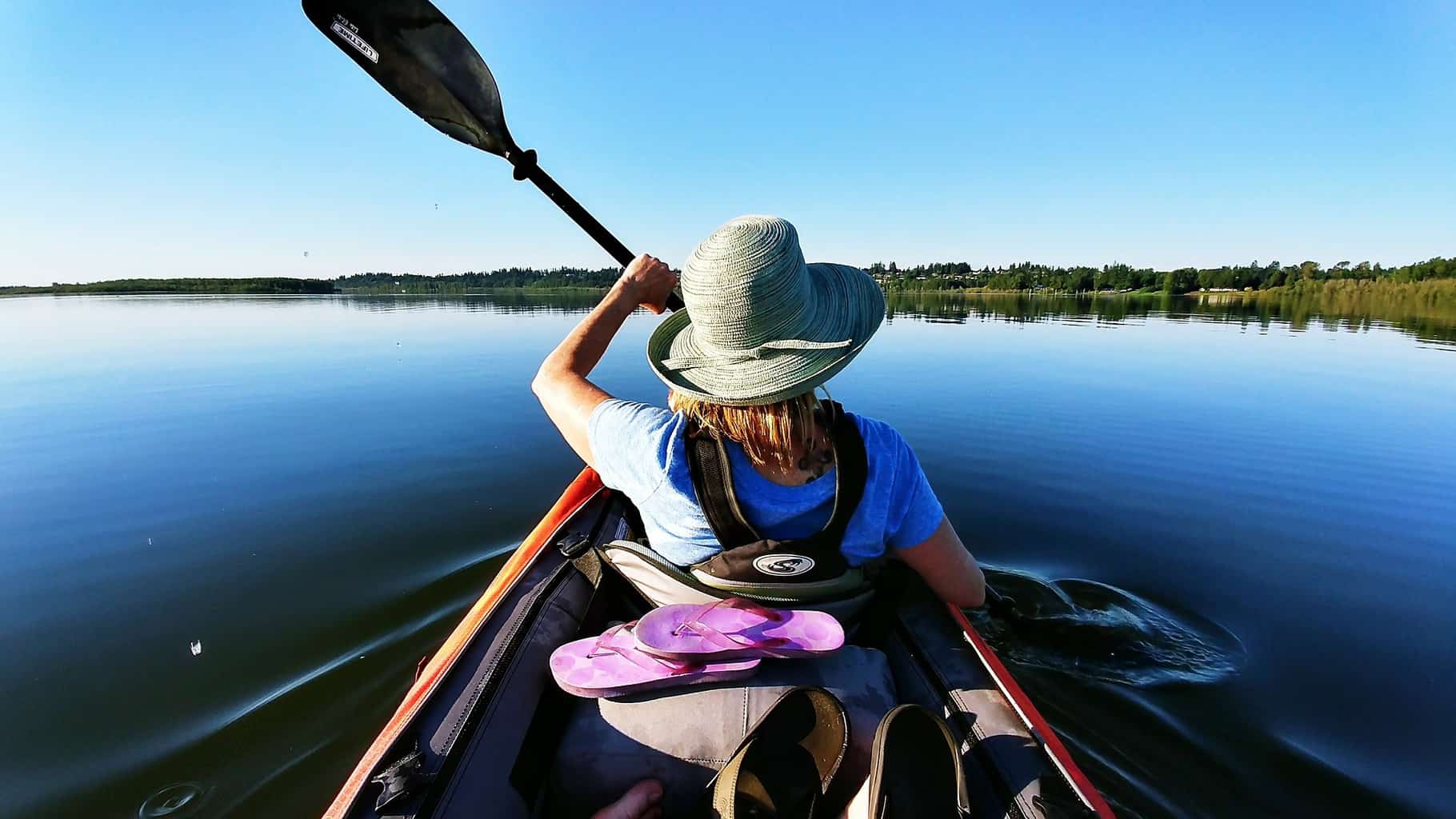
Can Kayaking Cause Tennis Elbow? (+8 Simple Tips to Avoid It)
-
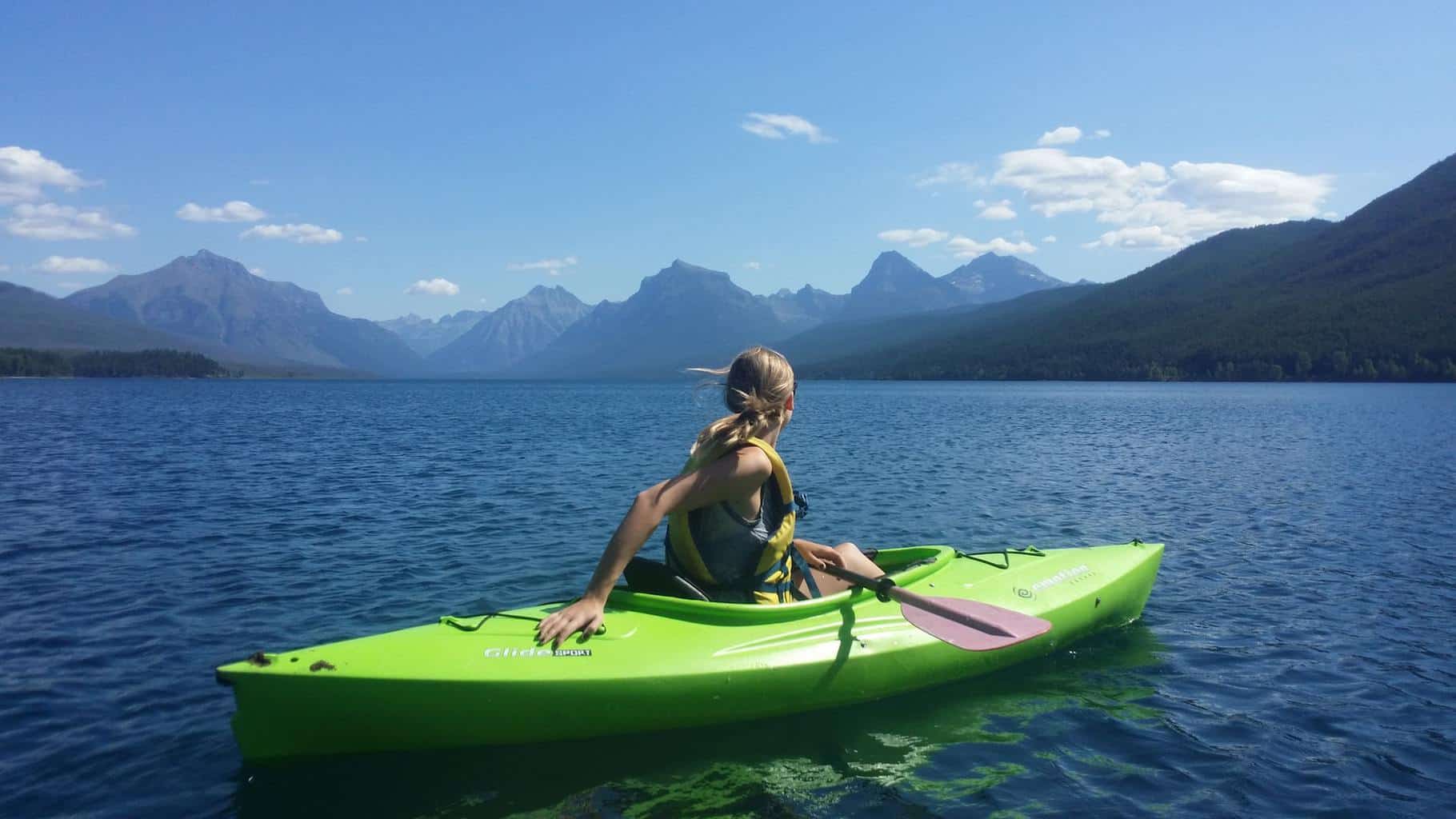
Can Kayaking Cause Sciatica? (+7 Tips to Avoid It)











